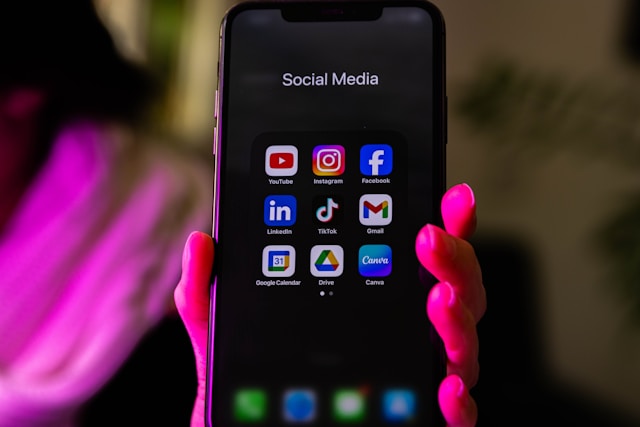The Power Visual Content Marketing Using Images and Videos

In today’s digital era, marketing has transformed to be more than just written words and figures. The power of the visual, with its instant, far-reaching impact and appeal, has become an integral part of robust marketing strategies. One may wonder, “But why is visual content so essential?”
“In an online world where every second matters, visuals represent a quick, succinct way to communicate a message that your audience will rapidly process and understand.”
This statement symbolizes the core advantage of visual content marketing– it’s speed and effectiveness. Visuals are instantly appealing and quickly processed. To navigate this path successfully, we require a clear strategy that optimizes this global trend. In this article, we’ll demonstrate why visual content is crucial in modern marketing and how to develop an effective visual content marketing strategy.
Table of Contents
Understanding the Role of Visual Content Marketing
Visual content refers to the images, graphics, infographics, memes, videos, and other visually appealing media that we interact with in our digital lives. In today’s highly digitalized world, these elements have become more than mere aesthetic embellishments, they’re key players in successful marketing campaigns.
Why are visuals so crucial? Humans are visual creatures by nature. We’re innately drawn to content that captures our eyes and attention. Given the overload of visual content marketing we face daily, eye-catching visuals are a surefire way to stand out in the clutter. They’re not just about attracting eyeballs, though. When done right, visual content can convey complex information in an easy-to-digest format, evoke emotional responses, and even spur your audience to action.
In this fast-paced digital era, businesses cannot afford to blend into the background. Having a strong online presence is essential, and an effective way to establish it is through a compelling visual content marketing. By incorporating appealing visuals into your content, you’re not just telling your audience about your brand—you’re showing them. This is why visuals play a vital role in creating a unique brand identity and telling your brand story effectively.
It’s also worth noting that visual content marketing is more than just choosing pretty pictures to go with your blog posts. An effective visual content marketing strategy utilizes images and videos to communicate your message, build emotional connections, and ultimately drive meaningful engagement. This leads to enhanced customer satisfaction, better conversion rates, and improved overall success of your online marketing efforts.
So, don’t overlook the importance of visual content marketing in your online marketing strategy. Whether it’s through a captivating infographic, a heartfelt video, or a high-quality image, effectively using visuals can give your brand a significant edge in this competitive digital landscape. It’s not just about being seen—it’s about leaving lasting impressions and building lasting connections.
Why Images and Videos are Outperforming Text in Marketing
It’s no secret that in this digital age, your audience’s attention span is shorter than ever. Relying solely on text-based content could mean losing a considerable chunk of potential consumers. That’s why images and videos are increasingly taking center stage in marketing strategies. These visual elements have the power to clinch your audience’s attention instantly, primarily because we, as humans, are wired to process images much quicker than textual information.
Indeed, the domination of visuals in marketing is not just a mere marketing fad. The statistical data behind visual content impact is staggeringly impressive. For instance, according to Cisco’s Visual Networking Index, by 2023, it is estimated that 82% of all consumer internet traffic will be for video content. On another note, a Venngage study shows that marketers who use visual content get 7.4 times more traffic than those who don’t.
The power of visuals lies in their ability to deliver a large amount of information compactly and engagingly. They’re easy to consume, share, and they leave lasting imprints on viewers’ minds. Furthermore, from an SEO perspective, images and videos have been shown to increase a website’s visibility on search engines. For all these reasons and more, images and videos are outperforming text in marketing.
But remember, using visual content marketing requires more than just adding any random stock photo to your blog or posting unprepared videos on social media. To truly stand out, businesses should create meaningful and unique visual content that aligns with their brand message and marketing goals.
Steps to Crafting a Visual Content Plan that Delivers
To craft a potent visual content plan that delivers the intended results, it is necessary to follow a meticulous process. This involves identifying goals, strategizing content for specific platforms, creating mobile-friendly content, and upholding brand identity.
Firstly, identifying your goals is a primary step. It means understanding what you want to achieve with the visual content marketing strategy. This could range from boosting brand awareness, increasing social media engagement, to driving sales or traffic to your website. Clear objectives serve as a compass, steering your visual content creation efforts in the right direction.
Secondly, formulating visual content strategies for specific platforms is essential. The content type that resonates on Instagram might not achieve the same impact on LinkedIn, as each platform has a different audience with distinct preferences. Therefore, tailor your visual stories to suit the platform you are using – infographics for LinkedIn, short video clips for Instagram, or data visualization for business-oriented blogs.
Creation of mobile-friendly visual content is another crucial consideration. With the majority of internet users accessing content through mobile devices, it is important that your visual content adapts well to smaller screens, maintaining quality and engagement levels.
Finally, your visual content needs to align with your brand identity consistently. This includes using a constant color scheme, typeface, and style that mirror your brand. Not only does a consistent visual language make your content instantly recognizable, but it also reinforces your brand image in the mind of your audience.
Read more: Demystifying Google Ads Quality Score: Tips for Improvement
Reference: https://blog.gitnux.com/visual-content-marketing-statistics







